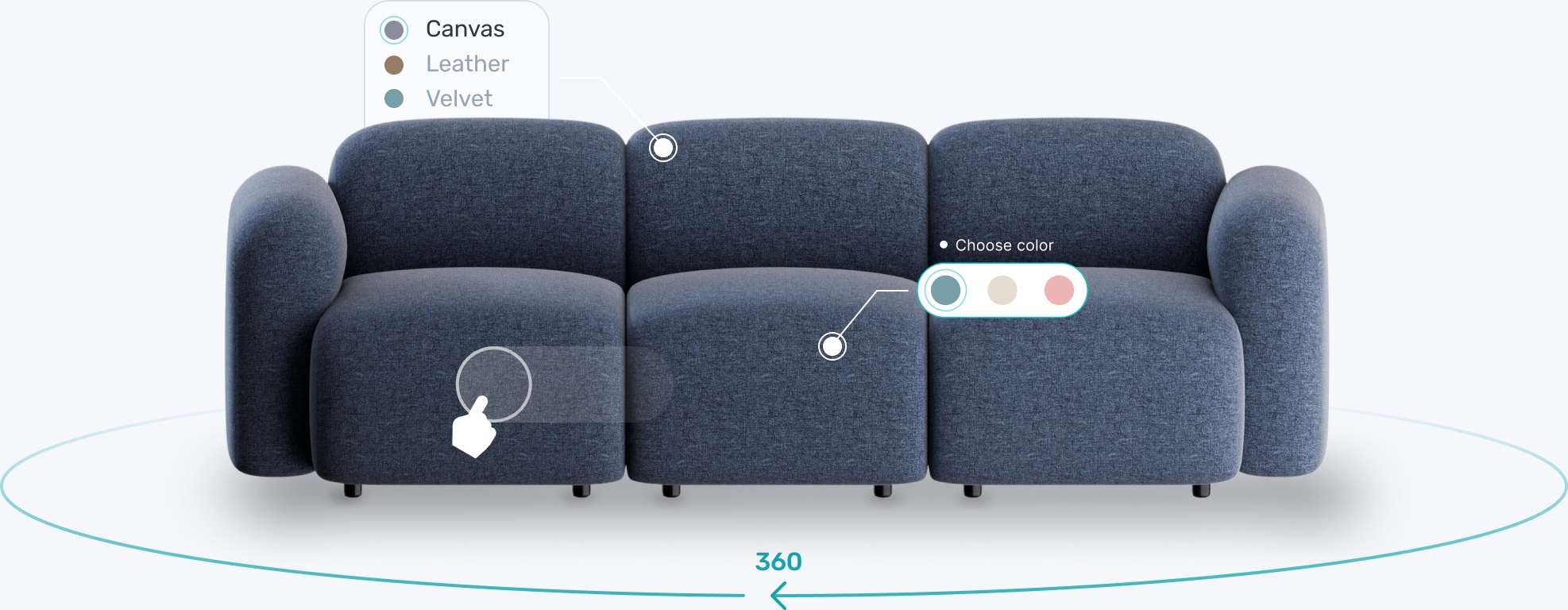Transform your eCommerce strategy with 3D & AR



%2520new.png)

Augmented Reality (AR) is an innovative technology that has quickly become popular in many industries, especially in the world of ecommerce. By overlaying digital information on top of the real world, AR enables users to have a more engaging and immersive experience with their surroundings. In the ecommerce sector, incorporating AR into online platforms can significantly enhance the shopping experience by offering more precise product visuals and interactive elements. As a consequence, businesses can enjoy the advantages of improved customer satisfaction and increased sales, establishing AR as a crucial asset in the highly competitive retail environment of today.
In ecommerce, AR technologies are used to make shopping more interactive and enjoyable for customers. They often use mobile apps or websites that let shoppers use AR features on their devices. These tools use the device's camera to place 3D models of products into the user's real surroundings, helping them see how items would look in their space. This helps customers make better buying decisions, especially for things like furniture, clothing, or accessories. Some ecommerce platforms also connect AR with social media, allowing users to share their virtual experiences with friends and get feedback. Overall, using AR in ecommerce helps create a better shopping experience, increasing customer confidence, satisfaction and boosting sales.
3D models play a crucial role in delivering realistic and immersive AR shopping experiences. These digital representations of products enable customers to visualize items with lifelike accuracy, bringing online shopping closer to the in-store experience. By allowing customers to place 3D models of products within their own space, AR technology helps bridge the gap between the digital and physical realms. This enhanced visualization empowers customers to make more informed purchasing decisions, as they can better understand how a product will fit in their environment, whether it's a piece of furniture, an electronic gadget, or a fashion accessory. Consequently, integrating 3D models in AR ecommerce platforms enriches the shopping experience.
Several companies have successfully integrated AR into their ecommerce platforms, reaping the benefits of enhanced customer engagement, satisfaction, and sales. For instance, IKEA's AR app, IKEA Place, allows users to virtually place furniture items in their homes, ensuring the right fit and style before making a purchase. Similarly, the beauty brand Sephora has introduced its Virtual Artist feature, enabling customers to try on makeup products virtually, resulting in more confident purchasing decisions. Another example is the online retailer Amazon, which offers an AR View that helps shoppers visualize how various products, such as electronics and home decor, will look in their space. These companies have reported increased customer satisfaction and engagement due to the immersive nature of their AR shopping experiences, ultimately leading to higher sales and a more competitive edge in the market.
Despite the numerous benefits of AR integration, implementing this technology in ecommerce also presents certain challenges. One such challenge is the creation of high-quality 3D models, which can be both time-consuming and costly. Additionally, the cost of AR technology itself may be a barrier for smaller businesses. Furthermore, providing a seamless and user-friendly experience is essential for the success of any AR implementation. To overcome these challenges, businesses can explore various solutions, such as collaborating with specialized AR vendors who can assist in creating 3D models and integrating AR technology more efficiently. It is crucial to rely on a partner that offers high quality 3D models, affordable prices and seamless digital asset management. Modelry provides such services at very competitive rates while also providing digital solutions to its customers and partners. Click here to visit Modelry and gain precious insight on how we can help you achieve all your commercial goals through AR.
In conclusion, incorporating AR technology into ecommerce platforms offers a wealth of benefits, including improved customer satisfaction, increased sales, and a more interactive shopping experience. The use of 3D models in AR enables businesses to provide customers with a closer-to-reality visualization of products, bridging the gap between online and physical shopping. Although challenges such as 3D model creation, technology costs, and user experience must be addressed, partnering with specialized AR vendors like Modelry can help businesses overcome these hurdles. Modelry's comprehensive services, including custom 3D modeling and AR integration support, ensure a seamless and user-friendly AR experience for customers. As the retail landscape continues to evolve, adopting AR technology in ecommerce is a strategic move for businesses seeking to differentiate themselves and maintain a competitive edge in the market.




